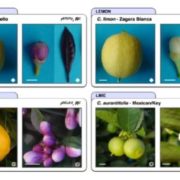
Changes in anthocyanin production during domestication of Citrus
Plant Science Research Weekly, Research0 Comments
/
Familiar citrus fruits such as sweet orange, lemon, lime and grapefruit are hybrids of three species: Citrus reticulate (mandarin), C. medica (citron), and C. maxima (pummelo). Cultivated varieties are generally vegetatively propagated, with diversity arising from spontaneous or induced somatic mutations.…
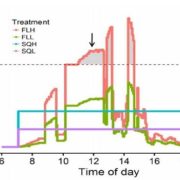
Importance of fluctuations in light on plant photosynthetic acclimation
Plant Science Research Weekly, ResearchPlant growth chambers are indispensable for most plant science researchers, but of course they do not replicate the outdoor environment. Vialet-Chabrand and Matthews et al. explore the effect of realistic, dynamic fluctuating light (for example as influenced by clouds and leaves) versus light provided…
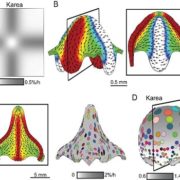
Generation of shape complexity through tissue conflict resolution
Plant Science Research Weekly, ResearchIt’s easy to visualize how a sheet of cells grows, but how does a sheet of cells form a complex, three-dimensional structure? Rebocho et al. describe how differential growth rates between cell layers and across the growing surface can produce a variety of complex shapes. As a model for shape complexity,…
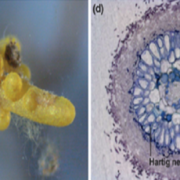
Review: Mycorrhizal ecology and evolution: the past, present and the future
Plant Science Research Weekly, ResearchThere are about 50,000 fungal species that form mycorrhizal associations with about 250,000 plant species. These associations significantly increase plant productivity by increasing nutrient uptake, particularly nitrogen and phosphorus, although with a considerable carbon cost to plants. Van der Heijden…

Review: Isoprene research – 60 years later, the biology is still enigmatic ($)
Plant Science Research Weekly, ResearchSixty years ago, the first report of isoprene (C5H8; 2-methyl-1,3-butadiene) emissions from plants was published. Isoprenes are the largest source of non-methane hydrocarbons in Earth’s atmosphere; furthermore, isoprene is reactive in atmospheric chemistry and can be converted into a variety of harmful…
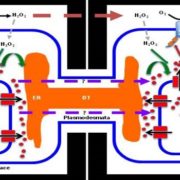
Review: Rapid long-distance signaling with Ca2+, ROS and electrical signals ($)
Plant Science Research Weekly, ResearchThere is ample evidence for rapid, long-distance communication within plants, but our understanding of how these signals are transmitted is incomplete. Choi et al. review recent advances in intercellular signal propagation via Ca2+, reactive oxygen species (ROS) and electrical signals; these “fast”…
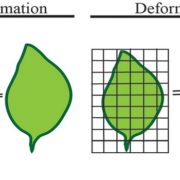
Review: Reshaping plant biology: Qualitative and quantitative descriptors for plant morphology
Plant Science Research Weekly, ResearchAs automated phenotyping platforms are becoming prevalent, scientists increasingly need to be familiar with tools used to describe and model form and growth. Balduzzi et al. provide an overview of the key concepts used in quantifying and describing plant morphology. They point to the need for a common…
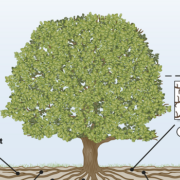
New Phytologist Tansley Medal finalists essays
Plant Science Research Weekly, ResearchThe New Phytologist Tansley Medal is awarded to an early career scientist for excellence in plant science. The essays submitted by each of the five finalists are published in the March 2017 of New Phytologist, and make good reading. We agree with the sentiments of the editors, “warmest congratulations…

Browse The Hub - MSU resources to help graduate students build skills
Careers, Careers - Blog, Finding Your Next Position, General InformationThe Hub - The Community of Minds, is the online presence of a group that meets weekly at Michigan State University (MSU), led by graduate student Bethany Huot. Browse the website for tons of useful information and resources about developing skills to help you navigate your career, from preparing for…

